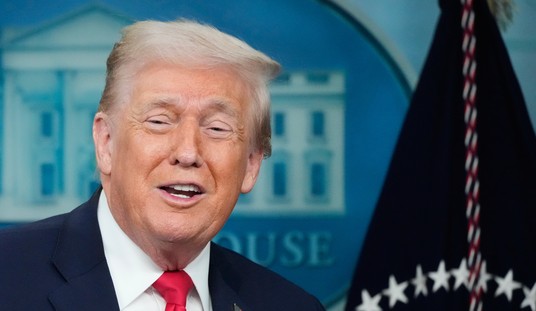It’s an 80-year low only because that’s when the subject first began being polled. In reality today’s percentage of church members is almost certainly the lowest in American history.
This may help explain why a Catholic priest’s mention of “the body of Christ” this week somehow ended up being translated by the New York Times into “a statue of Jesus.” They probably had no frame of reference.

That’s some graph. Normally with data related to matters of religious belief you’d expect to see a gradual slope downward, possibly starting in the 1960s. Not here. Church membership is cruising along steadily for 60 years — and then, in 1998 or so, something happens. Twenty years later, the share of church members across the population is down 20 points. At that rate you’d expect Americans to have completely given up membership in churches by 2070 or so.
Causation is complicated, Gallup notes: “A sharp increase in the proportion of the population with no religious affiliation, a decline in church membership among those who do have a religious preference, and low levels of church membership among millennials are all contributing to the accelerating trend.” Churches are losing members in part because religions are losing members — but even people who do belong to a particular faith are less likely to belong to a particular church. What gives?
My theory for any ominous social trend that began in the late 1990s is that it must be the farking Internet, which seems goofy at first blush here but less so upon reflection. The Internet may have no direct bearing on religious devotion but it does bear directly on people’s ability to replace real-world communities with virtual ones. If you’re satisfying your need to belong by participating in some online group, you may feel less need to join civic organizations, starting with your local church. Civic groups have also been experiencing membership decline for years, most dramatically and probably not coincidentally among younger adults — the sort of people more likely to spend longer hours on the Internet.
That is, it’s not necessarily a decline in religious belief that’s driving the decline in church membership, although no doubt that’s contributing. It’s the decline in real-world community of all sorts. How much of a coincidence can it be that loneliness in teenagers rose 50 percent between 2012 and 2017 as smartphones proliferated and social media became even more ubiquitous? Online communities don’t provide the same sense of meaningful companionship as real ones do, but they’re much easier to join and participate in. The bad supplants the good.
One potential flaw in my theory is that America’s “social capital” began dropping long before 1998. Robert Putnam famously diagnosed the problem in 1995 in “Bowling Alone.” Per Gallup’s numbers, churches were surprisingly resilient in retaining members even as other civic groups were apparently hemorrhaging them. But the flaw isn’t irreconcilable with the Internet theory of causation: It may be that Americans who had already severed ties with more secular groups like Kiwanis required a stronger cultural jolt to sever a bond as thick as religious community. The Internet ended up providing it. And now church membership is catching up to declining membership everywhere else.
Some demographic data for you. The first column shows the percentage of church members in each group from 1998-2000 and the second column shows the percentage from 2016-18. The third column shows the change between the two:

Obviously the Internet doesn’t explain everything. If it did, there wouldn’t be a single-digit decline among Republicans versus a 23-point decline(!) among Democrats, to the point where church members are now a minority of the party. Religiosity matters here.
Speaking of which, although men and women have each seen double-digit declines in church membership, the effect is more severe among men. Just 47 percent now count themselves as church members, i.e. a clear majority of an entire gender no longer belongs to a local religious community. And men are more likely to be Republican than women are, remember. If being right-wing were more closely tied to religious faith, we shouldn’t see numbers like these. What we’re getting here is a hint of a Trumpier, less Christian GOP. It makes sense that the president, at least at the time of his candidacy in 2015, wasn’t a member of a church either.









Join the conversation as a VIP Member